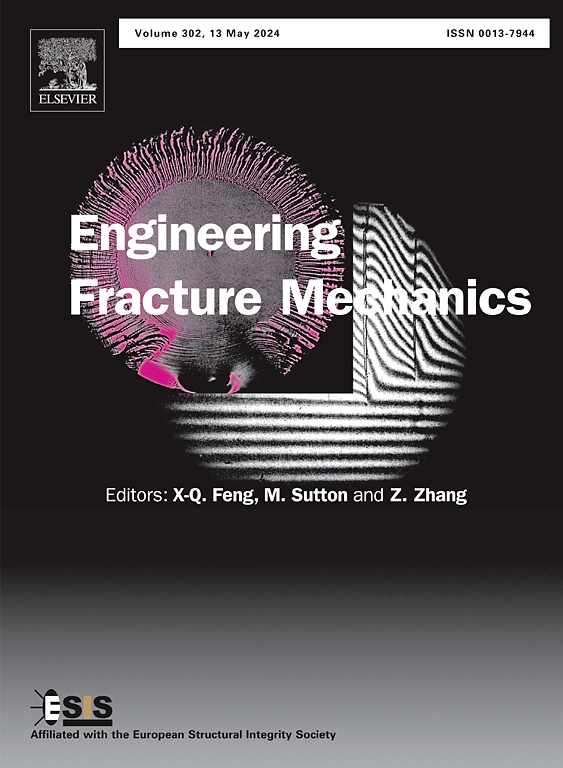岩石断裂的裂纹形核机制
IF 5.3
2区 工程技术
Q1 MECHANICS
引用次数: 0
摘要
岩石损伤演化引起的工程地质灾害与裂缝成核演化密切相关。基于多源声发射数据,包括声发射事件时间、空间分布和声发射能量,建立了花岗岩单轴载荷下的损伤演化模型。将三维声发射事件可视化,并与三维Ripley’s K函数进行积分,评价裂纹演化的空间聚类程度。将DBSCAN聚类算法与Alpha Complex Shape相结合,提出了一种裂纹成核体的三维自动重建算法。这种方法可以对裂纹成核体的形态、数量和体积进行全面的量化,这是对大多数现有方法的改进。引入以裂纹成核体体积与数量之比定义的裂纹成核生长因子(CNGF)来进一步研究岩石的渐进损伤过程。这有助于加强对岩石裂纹扩展过程中裂纹成核和损伤机制的理解。它为岩石相关地质灾害的反演和预防提供了有价值的见解。本文章由计算机程序翻译,如有差异,请以英文原文为准。
Crack nucleation mechanism of rock fracture
Engineering geological disasters caused by rock damage evolution are closely related to the evolution of crack nucleation. This study developed a damage evolution model of granite under uniaxial loading based on multi-source acoustic emission (AE) data, including AE events time, spatial distribution, and AE energy. The spatial clustering degree of crack evolution was evaluated by visualizing the three-dimensional (3D) AE events and integrating them with the 3D Ripley’s K function. A 3D automatic reconstruction algorithm for crack nucleation bodies was developed, combining the DBSCAN clustering algorithm and Alpha Complex Shape. This approach allows comprehensive quantification of the morphology, number, and volume of crack nucleation bodies, representing an improvement over most existing methods. The crack nucleation growth factor (CNGF), defined by the ratio of crack nucleation body volume to quantity, was introduced to investigate the progressive damage process in rocks further. This helps enhance the understanding of the crack nucleation and damage mechanisms involved in rock crack propagation. It provides valuable insights for both the inversion and prevention of rock-related geological hazards.
求助全文
通过发布文献求助,成功后即可免费获取论文全文。
去求助
来源期刊
CiteScore
8.70
自引率
13.00%
发文量
606
审稿时长
74 days
期刊介绍:
EFM covers a broad range of topics in fracture mechanics to be of interest and use to both researchers and practitioners. Contributions are welcome which address the fracture behavior of conventional engineering material systems as well as newly emerging material systems. Contributions on developments in the areas of mechanics and materials science strongly related to fracture mechanics are also welcome. Papers on fatigue are welcome if they treat the fatigue process using the methods of fracture mechanics.

 求助内容:
求助内容: 应助结果提醒方式:
应助结果提醒方式:


